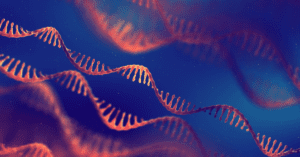
Dystonia is a disorder that affects the way a person moves. Specifically, people with dystonia have involuntary muscle contractions, which can cause abnormal twisting postures.
Dystonia can affect muscles anywhere in the body, including the face, neck, torso, and limbs. The impact of dystonia can vary greatly across individuals. Some people experience muscle contractions only in a specific body part during a specific task, such as those with writer’s cramp, which affects the hand during writing. For others, dystonia can affect multiple body parts or even the entire body.
In addition, dystonia may be the only symptom an individual has, or dystonia can appear with other symptoms, including tremor (involuntary rhythmic shaking of parts of the body) and ataxia.
What causes dystonia?
Given the existence of many kinds of dystonia, multiple potential causes of dystonia exist. For example, dystonia can be caused by genetic mutations, brain injury, exposure to toxins or certain medications, or the progressive death of neurons in the brain.
In some individuals, episodes of dystonia can be triggered by stress, exercise, or the performance of specific tasks. Many people develop dystonia with no identifiable cause; this is known as idiopathic dystonia, which is the subject of ongoing research.
How is dystonia treated?
Thus far, there is no cure for dystonia, but treatments for managing symptoms exist. Medications may be prescribed to reduce symptoms, and injections of botulinum toxin can lessen the impacts of dystonia by blocking muscle contractions.
Deep brain stimulation (DBS) is an effective surgical option for treating dystonia, delivering electrical pulses to the brain through surgically implanted electrodes. A significant amount of current dystonia research focuses on finding treatment options that can be adapted to individuals’ dystonia symptoms.
If you would like to learn more about Dystonia, take a look at these resources by the Dystonia Medical Research Foundation and the NIH National Institute of Neurological Disorders and Stroke.
Snapshot Written by: Sarah Donofrio
Edited by: Dr. Larissa Nitschke
Read Other SCAsource Snapshot Articles

Snapshot: What is Myoclonus?
Myoclonus is a neurological clinical sign marked by sudden, quick, and involuntary muscle contractions or jerks. These contractions can happen in one muscle group or in several muscle groups at Read More…

Snapshot: What is Aspiration?
Aspiration refers to the entry of food, liquid, saliva, or other materials into the airway instead of the esophagus during swallowing. This can occur when the coordination of muscles involved Read More…

Snapshot: What is Alternative Splicing?
To function properly, our body depends on many essential processes that are moderated by molecules created within us. Creating these crucial molecules, also called proteins, involves multiple steps and precursor Read More…









